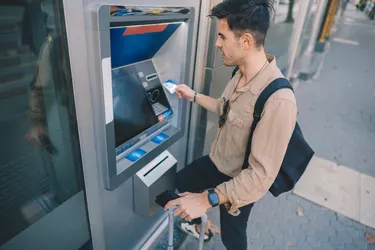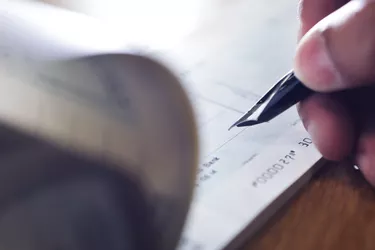

From time to time in your life when you're working on personal finance issues or work tasks, you might need to provide someone with a copy of your bank statement. You might not want that person to see all of the information on the statement (such as your account number). You can edit the statement (called "redacting") using one of two common methods.
Reviewing the methods for editing a bank statement will help you keep your information safe while providing someone the information they need to evaluate your financial position.
Video of the Day
Video of the Day



A bank statement is a monthly summary of the transactions that took place connected to a specific checking or savings account. The transactions might include withdrawals, deposits, fees, penalties and interest earned. You will not only see the amounts of the transactions, but you will often see the payee and the type of transaction (e.g., paper check, wire transfer, ACH transaction).
Whether it's for a personal or business account, it's a good idea to perform a bank reconciliation each month, recommends AccountingCoach.com. This is a comparison of the statement to your personal check register (if you keep one) or business ledger.



Let's say you write a $200 check to a friend who, for some reason, doesn't cash the check this period, or for several months. You might forget that you wrote this check, see that you have $500 available in your checking account, and spend $400 based on your belief that you have $500 available. Your friend then cashes the $200 check and it's either rejected by your bank (the check "bounces") or you have an overdraft of $100 on your account, which can trigger a fee.